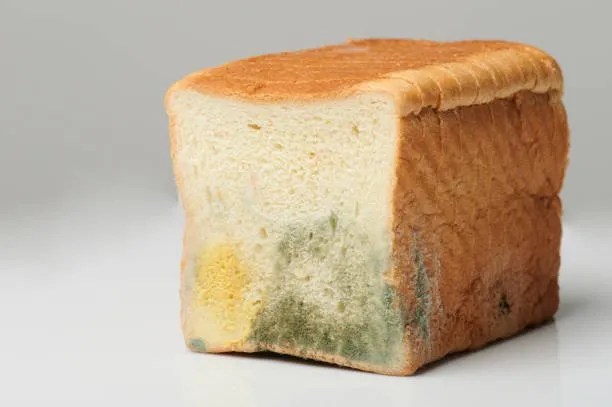
Food Borne Diseases are illnesses resulting from the contamination of food. For example; when food is kept on a shelf for a long time, it emits a putrid smell, starts to have slime, or sometimes it is a white fungus which starts to become visible on it. Of course, we instinctively know that such food is to be trashed; but most food borne diseases occur because these signs of food spoilage are not evident. The signs are there, but not yet so clearly seen to the naked eyes, and so the food is consumed.
In some countries, the term Food Poisoning is preferred. It connotes the fact that the person has eaten some substances which he ordinarily should not have consumed; and he has done that with the food.
These are known as pathogens which are produced by bacteria, viruses, or parasites. Food Borne Diseases are therefore the result of eating harmful bacteria, viruses, or parasites with our food. For some people it goes beyond that; some people may get sick by eating chemicals and enzymes which occur naturally in food, but which trigger allergic reactions.
According to the World Health Organization; there are over 200 diseases that can occur through the consumption of contaminated food. Analysts usually focus on bacteria when discussing food borne diseases because these are some of the most popular causes of food borne diseases. The examples presented below represents an inexhaustive list of food borne diseases which could occur as a result of eating contaminated food.
Examples of Food Borne Diseases
1. Mild Diarrhea from Campylobacter
Campylobacter (meaning “curved bacteria”) is a type of bacteria that was first identified by German – Austrian Pediatrician named Theodor Escherich, back in 1886. He found that the bacteria was present in the stools of young children who had died of a disease he called “cholera infantum”.
Campylobacter is a serious infection; it can be fatal, especially to children; although it is described as self limiting, and it is said that antimicrobial treatment is often not required. Most fatalities occur when the victims have had their immune systems compromised.
Campylobacter is mostly known to be found in poultry, but it can also be found in water, unpasteurized milk, and contaminated fresh produce. Campylobacter is a very popular bacteria; it is the highest cause of Cholera with 246,000 cases confirmed in Europe annually.
2. Cafeteria Germ
Cafeteria Germ is so named because it tends to happen in cafeterias that serve large numbers of people, including schools, prisons, and even hospitals. This food borne disease causes diarrhea and stomach cramps within 6 to 24 hours after eating contaminated food. In most cases it has been found that the illness begins suddenly and lasts for less than 24 hours.
When the investigations are made, it is usually found that the food has been stored in large quantities for long periods of time, although other causes may also be found such as the bacteria forming on dishes which are then used to serve the people.
Diarrhea can cause dehydration, so it’s important to drink plenty of fluids. This disease is not usually fatal; although deaths can occur in rare cases, or when proper attention is not given.
3. Acute Diarrheal Disease
Acute Diarrheal Disease is characterized by Fever, Abdominal cramps or pain, Bloating, Nausea, Vomiting, Blood in the stool, and also Mucus in the stool. However, this food borne disease which is caused by Salmonella spp. is a lot more serious than the minor cases of Diarrhea.
Acute Diarrheal Disease is associated with a high number of fatalities; therefore it remains a very serious public health issue around the world, despite the fact that there is a lot of research, and a lot of effort being put into containing it. However, the clinical effects can vary from common gastroenteritis to very serious enteric fevers which are life-threatening illnesses that require urgent medical attention.
Research shows that this disease usually comes from eggs and chicken, pork meats. It can also come from vegetables and fruits, as well as pets, or poultry birds.
4. Typhoid Fever (Salmonella Typhii)
Typhoid fever is a bacterial infection that can spread throughout the body. It is usually characterized by Headache, Weakness and fatigue, Sweating, Muscle aches, Dry cough, Stomach pain, Loss of appetite and weight loss, and High Temperatures reaching up to 40.5 C.
Typhoid Fever is a serious illness; it can affect many internal organs in the body. Without prompt treatment, it can cause serious complications and can be fatal.
Typhoid Fever can be passed from an infected person who prepares food or drinks for others when his hands or utensils have been contaminated with a small amount of infected poo or pee. When others eat the food or drink the fluids they get the bacteria into their bodies and so they get Typhoid Fever. The bacteria that causes Typhoid fever is similar to the one that causes Acute Diarrheal Disease cited above.
5. Hemolytic–uremic syndrome (HUS)
The term Hemolytic–uremic syndrome (HUS) is used for a whole group of blood disorders that cause low red blood cells, as well as acute kidney failure, and low platelets.
It can arise as a food borne disease; the micro-organisms that can cause HUS can be contacted by eating or drinking contaminated food or water; or by contact with a person who is ill with the disease.
When a person has contacted Hemolytic–uremic syndrome (HUS), he usually has a bloody diarrhea, vomiting, fever, and weakness. However, the diarrhea results in the rapid loss of fluid, and red blood cells, cumulating in Kidney problems and low platelets which occur as the diarrhea progresses.
6. Gastrointestinal And Non-gastrointestinal Infections Caused By Bacillus Cereus
Gastrointestinal Infections can arise for a number of reasons, including infections caused by exposure to the Bacillus Cereus bacteria. This illness usually arises from eating foods left at room temperature for long periods of time. It is important to note that illness can still occur even if you reheat the food.
This is usually a mild infection; even though it causes diarrhea and vomiting, which may last for up to 24 hours, it is not usually considered a serious infection because the mortality rate from this illness is very low, and also because it is self limiting, and symptoms tend to go away after some time.
This type of food poisoning occurs quite often, and can be handled quite easily once identified.
7. Enterotoxins
This is caused by bacteria which are produce toxins that target the small intestines. Even when the bacteria have been killed, these toxins which they have produced may remain harmful, sometimes for long periods.
8. Diarrhea
Diarrhea can arise from contact with Staphylococcus aureus in which symptoms appear in one to six hours. Symptoms can include intense vomiting including diarrhea. This can further cause abdominal pain and swelling, and other complications.
This is sometimes found in cooked and processed foods. Humans are the main cause of contamination because a substantial percentage of the human population carries this bacteria.
9. Botulism
Thankfully, Botulism is rare, but it is a serious food borne disease characterized by symptoms such as weakness, blurred vision, feeling tired, and trouble speaking. Patients have been known to exhibit other symptoms such as weakness of the arms, chest muscles, and legs, as well as vomiting, and diarrhea.
This illness is usually found among babies less than 6 months of age, who have not yet developed defensive mechanisms. It occurs when the bacterium Clostridium botulinum grows in (mostly) canned foods and produces botulin, which is a natural toxin- and a very powerful one.
A type of Botulism occurs when people inject street drugs.
10. Mycotoxins And Alimentary Mycotoxicoses (Food Poisoning Caused By Fungi)
Mycotoxins are toxins (harmful chemicals) caused by fungi rather than bacteria. The term alimentary mycotoxicosis refers to food borne diseases that occur when these mycotoxins are consumed with food. These can cause severe and unexpected outbreaks of diseases; for example: in the USSR, during World War II, 5,000 people died due an outbreak of food borne alimentary toxic aleukia (ALA).
Some of these toxins include:
Aflatoxins:
These are frequently found in tree nuts, peanuts, maize, sorghum and other oilseeds. One can also get them from corn and cottonseeds. Aflatoxins attack the liver, which will result in necrosis, cirrhosis, and carcinoma.
Altertoxins:
Altertoxins can be present in sorghum, ragi, wheat and tomatoes. Sometimes they may occur between storage and manufacturing.
There so many types of fungi that cause illnesses.
Food Borne Disease Caused By Viruses
Food Borne Diseases can also be caused viruses; in which case they would be classified as viral infections. These kinds of diseases account for about one third of cases of food poisoning in developed countries. A characteristic of this type of illness is that it has a long incubation period, and so the patients may not associate the illnesses with the food they have consumed; or they may associate it with something else which they may have consumed.
1. Hepatitis A
Hepatitis A is a disease which may start in the stomach but which may then spread to the intestines, and into the liver. Hepatitis A has a long incubation period which is usually between 2–6 weeks.
Hepatitis A is usually spread by eating food or drinking water contaminated with infected feces. Many times the food in question is shellfish, which may be undercooked or raw. Sometimes the disease may also be spread through contact with an infected person.
Symptoms include; jaundice, or yellowing of the skin or eyes, as well as nausea, abdominal pain, fatigue and fever.
2. Hepatitis E
Hepatitis E is the inflammation of the liver caused by one of the Hepatitis viruses called Hepatitis E.
Hepatitis E may occur as a result of eating food or drinking fluids that have been contaminated with fecal matter infected with the virus. It is similar to hepatitis A, but unrelated.
Hepatitis E is a serious illness, but it is self-limiting; meaning that the person recovers. However, when the patient has a compromised immune system, or it can result in death.
Other viruses that can cause illness through food include: Norovirus, and Rotavirus.
Food Borne Diseases Caused By Parasites
Food Poisoning can also arise from parasites; sometimes parasites can be present in the food (or fruit) we eat, and they can produce toxins in our bodies which can then make us sick. There are many types of parasites which are harmful to the body, and which can be ingested with food.
These include, but are not limited to Liver Flukes, Tape Worms, Flatworms, Pork Tapeworms, Anisakis, Large Roundworm, Toxocara, Roundworm, and many more.
Food Borne Illnesses Caused By Natural Toxins
Food borne diseases can also be caused by natural toxins that are found in plants and animals; and not caused by any parasites, bacteria, viruses or fungi. Some examples are: sulfur in onions and garlic, as well as the capsaicin in chilli peppers. However, there are some more dangerous natural toxins.
1. Mushroom Toxins: Some mushrooms are known to induce hallucination, coma, and even death.
2. Shellfish Poisoning: This occurs when people eat certain shellfish which contain poison. These poisons are usually there so the shellfish can defend themselves from predators. Consuming them in large quantities can lead to serious health issues.
3. Fugu Fish Poisoning: This occurs when the fugu fish is eaten. It can cause severe health problems in some people.
There are many other toxins that can cause health problems when eaten.
Preventive Measures of Food Borne Diseases
- Cooked food must be properly stored. All food must be sealed properly with a lid, and put in a refrigerator; if possible, to be frozen.
- All utensils used for cooking the food must be properly washed in running water.
- All utensils used for serving the food must also be thoroughly washed.
- Persons ill with diarrhea should not prepare food for others. The same applies to those who are caring for people sick with Diarrhea.
- It is important to wash hands thoroughly before preparing or dishing food, especially if one is caring for a child or a person who is sick with diarrhea.
- It is important to make sure of fruits, mushrooms, and shellfish before eating.
According to the World Health Organization (WHO), more than 420,000 people globally die from food poisoning and this figure is increasing yearly due to the increased environmental pollution. Preventive measures are advised by the World Health body as a first means of reducing the effects on human population.




